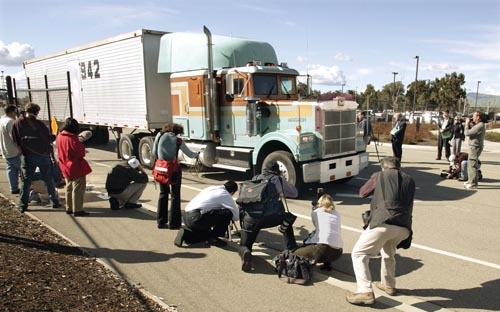Agreement allows state to tap Lab capabilities
State of California agencies can now tap the expertise and capabilities of federal laboratories such as Livermore to more quickly address urgent state needs and provide opportunities to bolster state economic growth thanks to a new contracting mechanism now available online.
A model contract with template is now available via the California State Department of General Services Office of Legal Services. Lab-specific information is available on the Global Security Principal Directorate internal website.
The availability of this online resource is the culmination of legislation passed by the state legislature and signed by the governor in 2006 authorizing the state to negotiate standardized contract language with U.S. Department of Energy and NASA laboratories that would allow state agencies to quickly employ some of the unique technical and scientific capabilities available at Lawrence Livermore, Lawrence Berkeley and Sandia national labs as well as NASA-Ames and JPL.
"In the past, because of conflicting state and federal contracting rules, it could take months or even years to negotiate a contract," said Colin Lau, an attorney in the Lab's Office of General Counsel. "This will enable the labs to provide the unique services they offer to the state. It will open opportunities for the labs and the state to work on projects."
LLNL capabilities employed by the state in the recent past include the Center for Accelerator Mass Spectrometry (CAMS) and the National Atmospheric Release Advisory Center (NARAC). The Lab worked with the California Highway Patrol to develop a truck stopping device for the Department of Homeland Security. Other examples of LLNL assistance provided to state and local agencies include: helping California farmers successfully battle Newcastle poultry disease and soybean disease; assisting with groundwater clean-up, air quality assessment and monitoring; assessing the state's homeland security needs, including port, border and airport security; and pioneering summer programs for math and science teachers.
The biggest hurdles that prevented state agencies from contracting with federal labs included timing of payments; cost recovery; indemnification; and state audits. For example, federal rules required DOE labs to receive payment up front, before services are provided, where California rules authorize agencies to pay for services only after they've been completed. New rules now authorize payments to federal labs in advance.
The contracting problems were highlighted in a report published in February 2006 commissioned by the California Council on Science and Technology (CSST). Robin Newmark of the Global Security Directorate, who has served as a Lab representative on the council since 2005, said the legislation addressing the contracting barriers was prompted by post 9/11 domestic security concerns and the desire to improve the state's response to emergencies such as earthquakes or other natural disasters.
"It used to be that, even if we had a pre-existing relationship with an agency, we might have to reinvent the wheel for a new contract," Newmark said. "Sometimes years could go by.. Now it should be a straightforward process."
The Federal Laboratory Technology Contracting Act, or California Senate Bill (SB) 1629, was sponsored by State Sen. Jackie Speier, who also saw economic opportunity for the state in removing the contractual barriers. Commenting on the CSST report, Speier said: "We're sitting on a gold mine of technology that could energize our economy and we're not mining it. In fact, we're not even prospecting yet."






